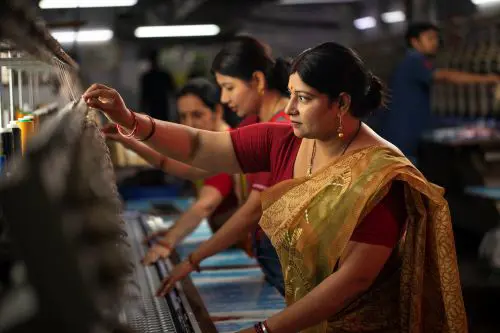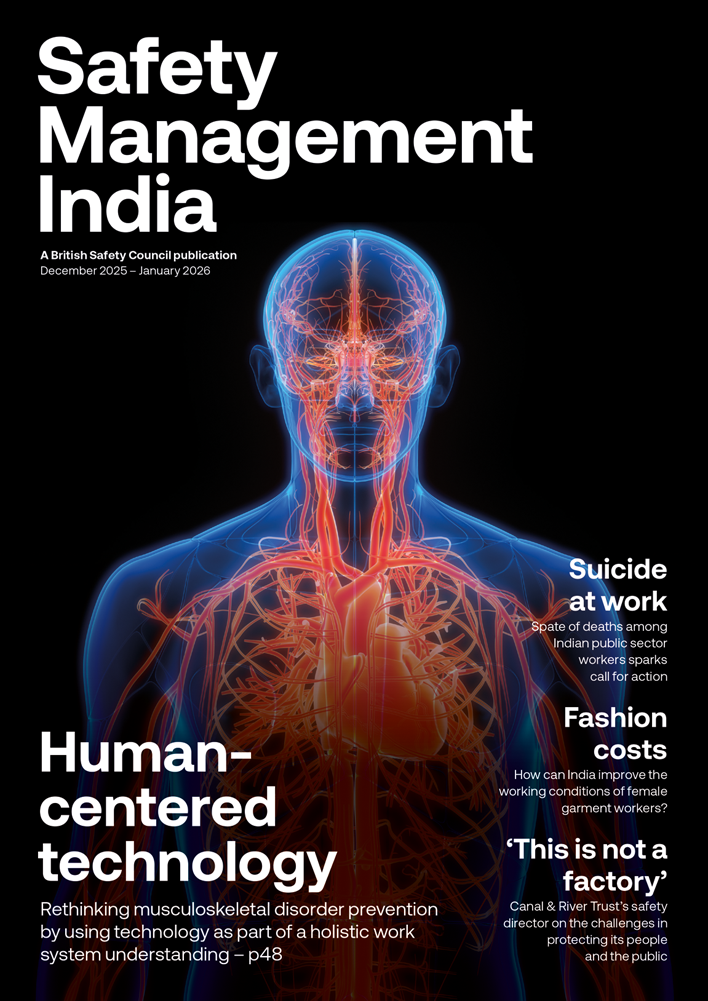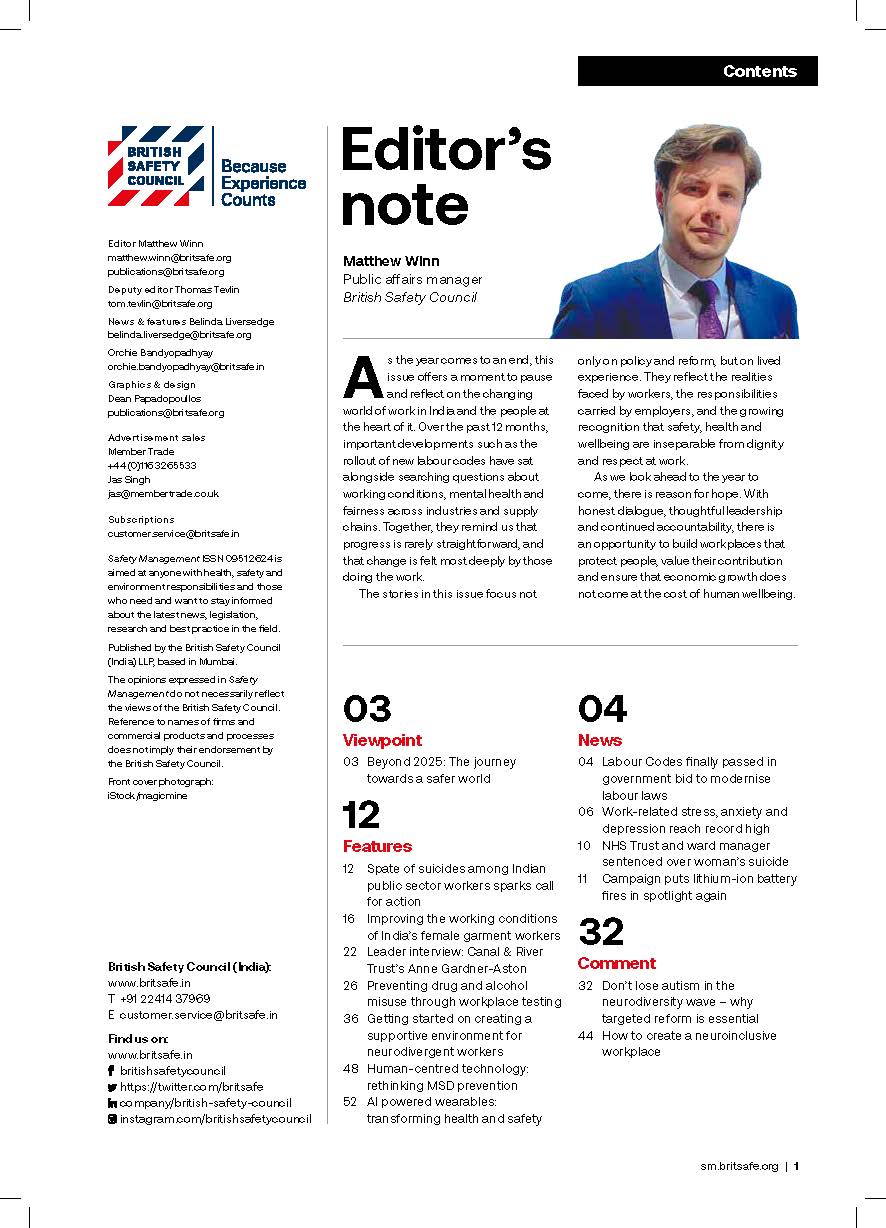In India, there are regular reports of young children being killed or injured while living in makeshift houses on construction sites where their parents work long hours as labourers. However, construction companies, schools and NGOs are increasingly working together to provide on-site childcare centres and schools so children can both be kept safe from the dangers and receive an education.
Features
A risky existence: tackling dangers to the children of migrant construction workers
In early April, a sand-laden dumper truck ran over a casual construction worker and his three children as they slept inside the perimeter of an under-construction railway electricity substation and powerhouse in Prayagraj, Uttar Pradesh. All four were pronounced dead at the scene.
In the same month, an 18-month-old boy died at a construction site in the city of Nashik, Maharashtra, after falling into a water-filled pit. The toddler, named by local media as Ronak Kanoje, was playing nearby while his parents, both construction workers from Bihar, were having lunch. When the parents realised that Ronak was not within their sight, they checked the three-foot deep pit, and found the boy inside. He was rushed to a hospital but declared deceased by the doctors.
In another fatal accident in March, a 10-year-old boy lost his life when an iron rod fell from an upper floor of an under-construction building in Greater Noida, Uttar Pradesh. The child lived with his family at the site, where his parents worked as daily-wage labourers. The family hailed from Jharkhand and had travelled to Greater Noida with a Jharkhand-based contractor.

When the police reached the site, they found Aditya’s mother distraught, and she refused to allow them to rush the boy to hospital. “She was continuously asking to return to Jharkhand while grabbing Aditya in her lap,” a police officer, who asked not to be named, told Hindustan Times. “We somehow managed to counsel her and rushed the kid to a hospital, where doctors declared him dead.” It was suspected that the rod had been loosely fixed, which caused it to fall on the boy’s head.
In yet another tragic incident in February, three-year-old Arvind Maurya was electrocuted at a construction site in Kolhapur, Maharashtra. His parents, both employed as labourers at the site, had left him sleeping in a room while they worked on an upper floor. Upon waking, Arvind wandered out and accidentally came into contact with an uncovered live electrical wire. Arvind’s father rushed him to hospital for treatment, but he was declared dead upon arrival.
Grave risks
These incidents highlight the grave risks that migrant construction workers and their families sometimes face when they leave their villages to work on construction sites in major towns and cities – often without any protection or support from the state or their employer.
Due to the low wages paid by certain construction contractors – and the need to divert income to cover day-to-day living costs, such as accommodation or sending funds back to their impoverished families – a significant number of construction workers lack the financial resources to pay for childcare. As a result, a significant number of construction workers – including migrant workers – are forced to bring their children onto hazardous construction sites while they work. The sites often feature multiple hazards that pose a risk to young children – such as exposed, live electrical wiring, steel pilings, concrete debris and open pits. These environments are far removed from the fundamental conditions every child deserves – care, safety, nurturing and opportunities for healthy development.
Construction is one of the fastest-growing sectors in India, currently contributing about nine per cent to the country’s GDP. The industry is projected to reach a market value of USD $1.4 trillion by 2025. By 2030, an estimated 10 crore (100 million) workers are expected to be employed in the construction industry, a sharp increase on the estimated number of seven crore (71 million) in 2023.
However, construction workers, particularly migrant labourers, continue to work in precarious conditions. They face a fragmented employment landscape marked by frequent relocations to new sites and cities in pursuit of work, high job insecurity and limited access to consistent welfare support.
Difficulty accessing benefits
Although the Building and Other Construction Workers (Regulation of Employment and Conditions of Service) Act, 1996 (BOCW Act) was enacted to safeguard the rights of construction workers and improve their working conditions, many workers are still unable to access the social security benefits they are entitled to under its provisions. This is largely due to low awareness of the Act among both workers and construction contractors, challenges that workers face in registering for eligible social security benefits under the Act, and the largely informal nature of employment in the construction industry.
Under the BOCW Act, all states and Union Territories (UTs) must establish a welfare board to oversee welfare schemes for construction workers and their families. The board is funded by a levy, or ‘cess’, on contractors and developers in charge of construction projects and companies that employ 10 or more workers. The funds provide a range of financial assistance to workers and their families, including health and pension benefits, maternity leave, education grants for children and compensation for accidents and deaths at work.
However, labour rights commentators say the welfare scheme fails to provide adequate social security coverage and benefits for all construction workers, because the workers must formally register themselves with the BOCW scheme. The level of registration of workers by contractors is poor, and many labourers regularly move from one site or project to another, causing their registrations to lapse, argue commentators.
The BOCW Act also places duties on contractors in control of projects employing 10 or more workers to protect the health, safety and welfare of workers on-site, such as the provision of clean drinking water, sanitary facilities, canteens, first aid and protective equipment.
However, commentators say contractors frequently fail to comply with the Act’s requirements around the provision of measures to protect workers’ health and safety. There are frequent reports of workers lacking access to clean drinking water, toilets, proper accommodation and even basic medical facilities. The poor conditions make the construction workers and their family members, including children, vulnerable to harm or injury.
Factors driving migration
According to research by the Institute for Social and Economic Change, the construction industry absorbs the largest proportion of rural workers who migrate to urban areas in search of casual work to support themselves and their families. Common factors driving the migration include insufficient employment opportunities in the rural agricultural industry, chronic poverty and drought conditions making it impossible to cultivate crops and food on small rural farms.
The process of migration from rural to urban areas poses significant risks to the welfare of the workers’ children, and many drop out of school permanently. A significant number end up working in industries like construction alongside their parents. The removal of these children from schooling also threatens India’s goal of ensuring universal enrolment in education of all children up to a certain age.
According to the Self Employed Women’s Association (SEWA), the Building and Other Construction Workers’ Board reportedly has a total fund of Rs 78,000 crore, raised from levies on construction companies and developers, and this money is set aside to pay social security benefits to construction workers registered with state and UT welfare boards. However, SEWA claims only a fraction of the sum has been paid out in benefits and most of the fund lies unused. SEWA says the unused funds should be used to pay social security and other welfare benefits to those construction workers, including migrants, who are currently not within the scope of the scheme.
However, there have been encouraging developments aimed at ensuring the health, safety and welfare of migrant construction workers and their children.
In April 2025, the Delhi–NCR (National Capital Region) state government directed all heads of government schools to provide digital data about all enrolled students by the end of May 2025, to enable the Delhi–NCR government to pay out up to Rs 12,000 in financial aid for each child of a registered construction worker. This initiative, part of a long-standing welfare scheme under Section 22(1)(e) of the BOCW Act and Rule 281 of the Delhi BOCW Rules, 2002, is being implemented jointly by the Delhi BOCW Welfare Board and the Delhi–NCR government’s Directorate of Education for the academic year 2024–25.
High Court ruling
In another move set to benefit thousands of families, in January 2025 Karnataka High Court quashed a 2023 Karnataka state government notification that had reduced government financial grants for educational purposes for construction workers’ children.
Two female students had appealed the decision by Karnataka BOCW Welfare Board to reduce their financial grants to fund their university studies, and their appeal was upheld by the High Court.
Under a notification issued by the Karnataka BOCW Welfare Board in August 2021, the children of construction workers were entitled to educational assistance of Rs 35,000 per semester for university studies.
However, in October 2023, the state Welfare Board issued a notification reducing the amount to Rs 10,000.
The two students launched an appeal because their applications for educational assistance were turned down by the state government.
The High Court ordered the Karnataka BOCW Welfare Board to process the two students’ pending applications, uphold the previous grant of up to Rs 35,000 per student per semester, and pay out grants to the two students for the academic years 2020–21 to 2022–23, for which the students had applied but had only received partial financial assistance. The judge also ordered the Karnataka BOCW Welfare Board to pay grants to the two students until they complete their university studies, and stated the 2021 notification that children of construction workers are entitled to educational assistance of Rs 35,000 per semester must be re-instated.
Issuing the ruling, Justice M Nagaprasanna, also ordered the Karnataka BOCW Welfare Board to immediately re-consider similar applications from students who have not been awarded the full grants of Rs 35,000 per semester, stating that other students should not be forced “to knock on the doors of the [High] court seeking identical relief”, the New Indian Express reported.
Judge M Nagaprasanna added: “The rights of construction workers cannot be railroaded in broad daylight by the state government, or the authorities like the Board. The core issue revolves around the education of two girl children of construction workers.
“Therefore… I wish to observe that the state must remember that it should take all steps towards educating women, as it is said, educating a man is educating an individual; educating a woman is educating a generation,” he observed.
The judge also rejected claims by the Karnataka BOCW Welfare Board that it faced financial constraints that meant the available educational grants for children of construction workers needed to be reduced, arguing that significant amounts of money from the board’s welfare fund remain unspent.
Justice M Nagaprasanna also directed the Comptroller and Auditor General of India to audit the Board’s finances within three months and report back to the court, stating there appeared to be a lack of transparency in how the board is managing deposits worth nearly Rs 7,000 crore.
These judicial and administrative decisions clearly offer a glimmer of hope for the thousands of construction worker families who have long been denied their rightful financial and social security support and benefits.
NGOs providing education opportunities
Meanwhile, at the same time, several NGOs in India are trying to support the children of construction workers, focusing on improving their access to good education, healthcare and overall wellbeing support. Some NGOs provide early childhood education, healthcare and nutritional support for the children of construction workers, often through mobile creches or day care centres located near construction sites. For example, SEWA’s Delhi branch works closely with construction workers and their families, focusing on increasing children’s educational opportunities, access to healthcare for children and their working parents and opportunities for construction workers to seek alternative and safer livelihoods.
Meanwhile, a real estate development company in Hyderabad, My Home Constructions, has worked with an international school based in the city to open several combined day care centres and schools for the children of construction workers, reports the Better India news website.
A senior employee at My Home Constructions had noted that children were present on makeshift housing on construction sites in the city when they should have been at school. He reported his concerns to the company’s vice chair, Ramu Rao Jupally, who immediately agreed to fund a day care centre and school for children andm infants up to age 12.
The company reached out to Meghana Gorukanti Jupally, founder and director of Hyderabad’s Meru International School, and together they established the first ‘Meru Aveksha’ centre, at a residential development site run by My Home Constructions in Kokapet, Hyderabad. The centre features play areas and classrooms, and teachers from Meru International School have developed and deliver a curriculum covering numeracy, physical activity, arts and crafts, and health and hygiene skills. The children are also provided with uniforms, textbooks and worksheets, items their parents might otherwise struggle to afford.
Two further Meru Aveksha centres have since opened in Hyderabad, and both My Home Constructions and Meru International School are now seeking to raise awareness of the day care and school centre model among other real estate developers to encourage them to open similar establishments across India. The Meru Aveksha centres are also supported by the Confederation of Women Entrepreneurs of India (COWE), a non-profit organisation dedicated to the empowerment of women entrepreneurs in India.
Before establishing the first centre, the Meru Aveksha team spoke to the parents and children of the migrant labourers to understand the major gaps. They found that there were no safe facilities for children to attend during the day and their parents often found it difficult to get their children into government schools due to their lack of basic identification documents, like an Aadhar card.
Speaking to Better India, Gorukanti Jupally said that perhaps the biggest challenge was convincing the children’s parents of the benefits of sending their children to the centre, although they began to see the value after being shown around facilities. “We counsel the parents on the importance of early education,”, she told Better India. “Our idea is to create a habit of coming to a structured space daily. After attending this centre for two or three years, they will be ready to join a mainstream school.”
Gorukanti Jupally adds that, after a period of attending one of the centres, the children become more enthusiastic and engaged with the learning process. “Their attitude towards themselves has changed,” she told Better India. “From not attending classes post-lunch, they all come back now. They have started enjoying themselves. The most critical change we have seen is that they are engaged and interested.”
She added: “We want to prevent children being left alone at home. Every child deserves a good education and a chance at a better life. Let’s give them that.”
FEATURES

The price of fast fashion is not pretty
By Orchie Bandyopadhyay on 11 December 2025
The largely female workforce in India’s garment manufacturing industry faces long hours, low wages and poor working conditions, and campaigners say it is time the Indian government and international clothing brands took tougher action to improve working conditions, pay and employment rights.

Suicide at work: a major problem in India
By Orchie Bandyopadhyay on 11 December 2025
Recent reports of suicides among workers ranging from police officers to electoral roll officials have prompted calls for employers and government agencies to do more to both reduce excessive workloads and provide better mental health support at work.



